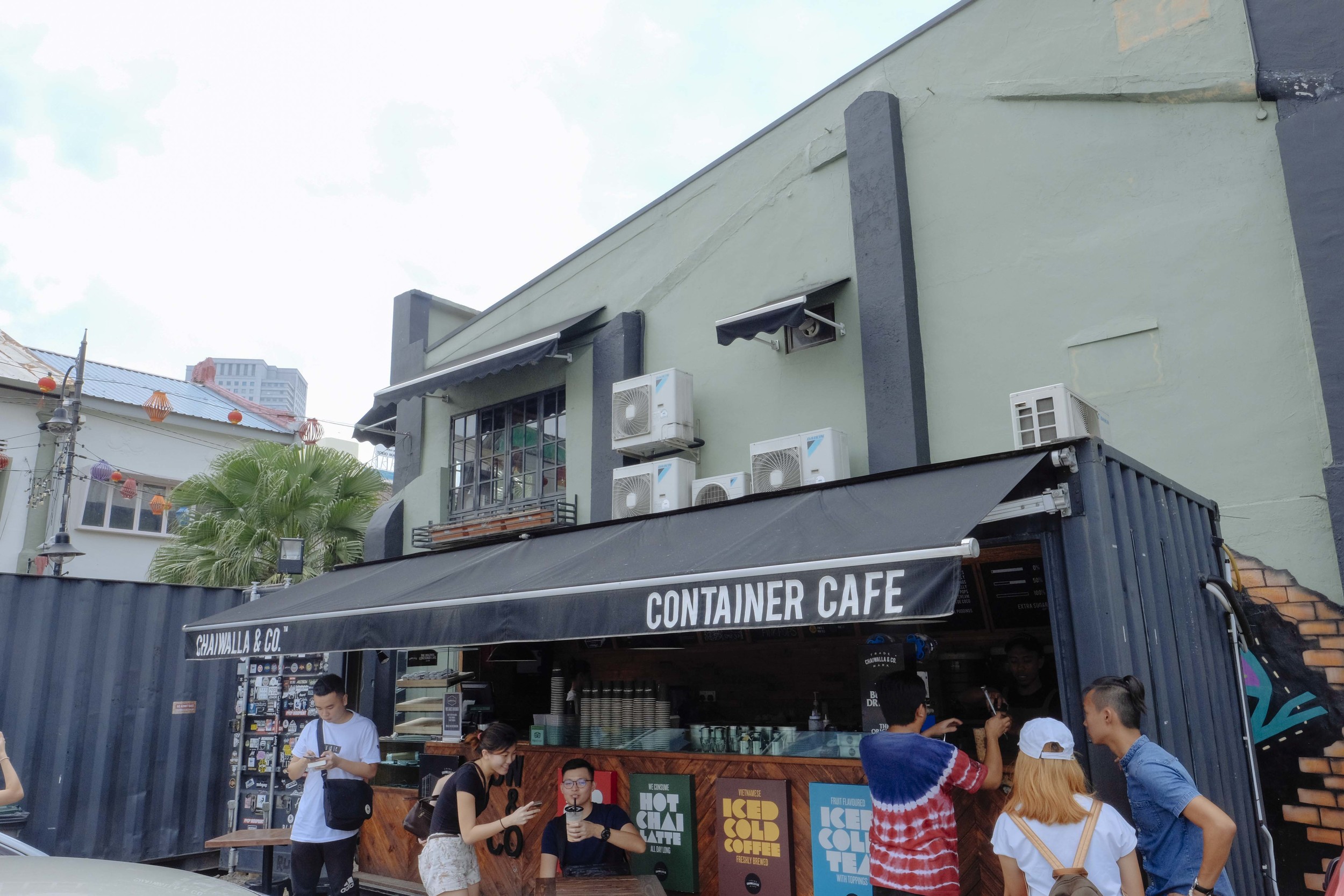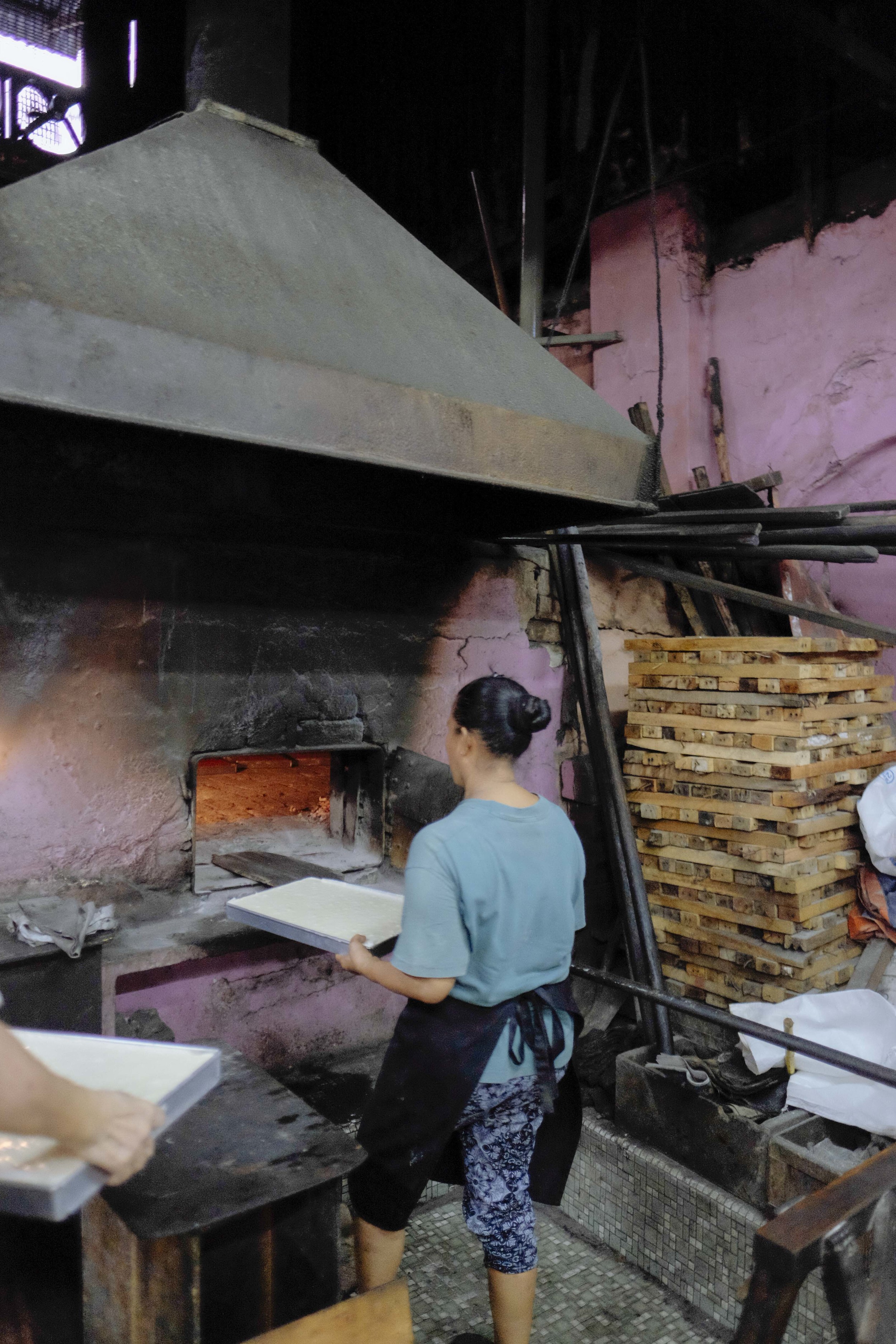A Day Out In Johor Bahru
Malaysia | 5 June 2016
Here in Singapore, it seems to have become suitably chic to cafe-stagram and twitterfy the latest and greatest food joints on weekends. Which can get expensive if you're ordering more than just an expresso. Fret not, a rash of hipster cafes has opened up just across the Causeway, causing an influx of visitors armed with the latest in camera filters on their phones and more than happy to leap from one tastefully decorated interior to another.
Mackerel spends a day on foot, discovering all that JB has to offer.
JALAN TRUS
Start off the day with a healthy dose of holy places.
After navigating through immigration, walk over to City Square and exit on the ground floor via the door next to J.CO Donuts. Cross the road, and on the right of the public bank, you'll find a walkway leading to a short flight of stairs. That gets you to Jalan Trus.
If you turn right and walk for about five minutes, you’ll be able to see the Church of the Immaculate Conception along Jalan Gereja. The current building dates from 1927.
Then walk back down Jalan Trus until you catch a glimpse of the Ancient Johor temple on the other side of the road. In the late 19th century, a group of Chinese community leaders, led by Tan Hiok Nee, built the Johor Gu Miao or Ancient Temple which houses deities revered by the five main dialect groups under one roof.
Across the road from the temple is your first hipster sighting of the day. Faculty of Caffeine specialises in expressos and… pancakes. The decor is minimal, the coffee is passable and the prices are creeping up close to Singapore; RM11 (Malaysian Ringgit) for a flat white. That’s about SGD$3.70 (Singapore dollar).
A little further on and you’ll find a Sikh temple, the Gurdwara Sahib. The present building dates from 1992, but the first Gurdwara was built in 1921 to cater to the growing Sikh population in Johor, most of whom served in the Police Force and the Johor Sultan’s Guards.
At the junction of Jalan Trus and Jalan Ungku Puan, rising up like an upstanding citizen, is the fascinatingly named Arulmigu Rajamariamman Devasthanam. Apparently, it was originally known as Mariamman Temple, but the Raja was added in honour of the donation of Sultan Abu Bakar who gave the land and some money for the construction of the temple back in 1911.
The temple underwent a major facelift in the 1980s. Inside, a regular stream of barefoot devotees come to pay their respects and leave offerings before the many gods that inhabit all corners of the holy place.
Before hitting the main cafe belt, I could not resist a detour to Restoran Muthu, also along Jalan Trus. Appam*, prata** and teh halia*** made for a satisfying and affordable brunch.
*Appam - A type of pancake made with fermented rice batter and coconut milk. Usually served with brown sugar and coconut.
**Prata - A fried flour-based pancake that is cooked over a flat grill. Usually served with curry.
***Teh halia - Ginger tea with condensed milk
PASAR KARAT
Just off Jalan Trus, Jalan Sengget is also home to Pasar Karat, a pretty happening night market. But by day, Pasar Karat is a quiet, narrow alley of cheeky graffiti. Blink and you’ll miss it.
JALAN DHOBY
There are approximately two dhoby (laundry) shops that remain along the street. I suppose we should be grateful that there are any left at all, when what assails first is a slew of refurbished proto-post-filtered cafes, with names like The Roost, Flowers in the Window and The Replacement. Suitable indie band names, on second thought. I had a RM15 lemonade at Flowers in the Window. It was pretty overhyped and, at that price range, the only locals who can afford it are kids who attend the many international schools in the area.
Apparently, the churros at The Replacement are worth a dip, but I opted instead for coconut ice cream at Sangkaya. This is a homegrown brand with three outlets in JB and they only use Malaysian coconuts. The ice cream was flavourful and not overly sweet, and a single scoop was an affordable RM2.90. Plus, coconut is supposed to have all sorts of useful health benefits, so less guilt, perhaps?
Jalan Dhoby is also home to a famous Hainanese pork chop joint, Hua Mui, if your tastes run to the traditional, as well as the established Salahuddin (closed on Fridays) an old school (1937!) Indian Muslim curry puff snack joint replete with Bengali lamb curry puffs with flaky crusts, a childhood staple.
JALAN TAN HIOK NEE
Parallel to Jalan Dhoby, Jalan Tan Hiok Nee also has a mix of traditional businesses and modern cafes, such as the Chaiwalla & Co. Container Cafe, with excellent if a little too sweet, chai latte (RM7.80, regular).
But, it was to Hiap Joo Bakery first for some of their famous banana cake and it didn’t fail to satisfy. Hiap Joo’s wood fired oven has been going strong since 1919 and shows no signs of slowing down.
I spent an hour poring over the history of Chinese trade in Johor Bahru at the Chinese Heritage Museum, also known as the Tiong Hua Museum.
The museum is relatively simple, but accessible, with a balance between information and artefacts to keep the casual museum-goer engaged. Of some interest was an exhibition on the history of pepper and gambier in Johor, where the numerous rivers were cleverly used by Chinese traders in the late 19th century to open up the interior of this vast state.
Opening hours: 9am – 5pm daily (closed on Mondays). Entrance fee: RM6 for adults.
NOTABLE MENTIONS
The Sultan Abu Bakar Mosque




























